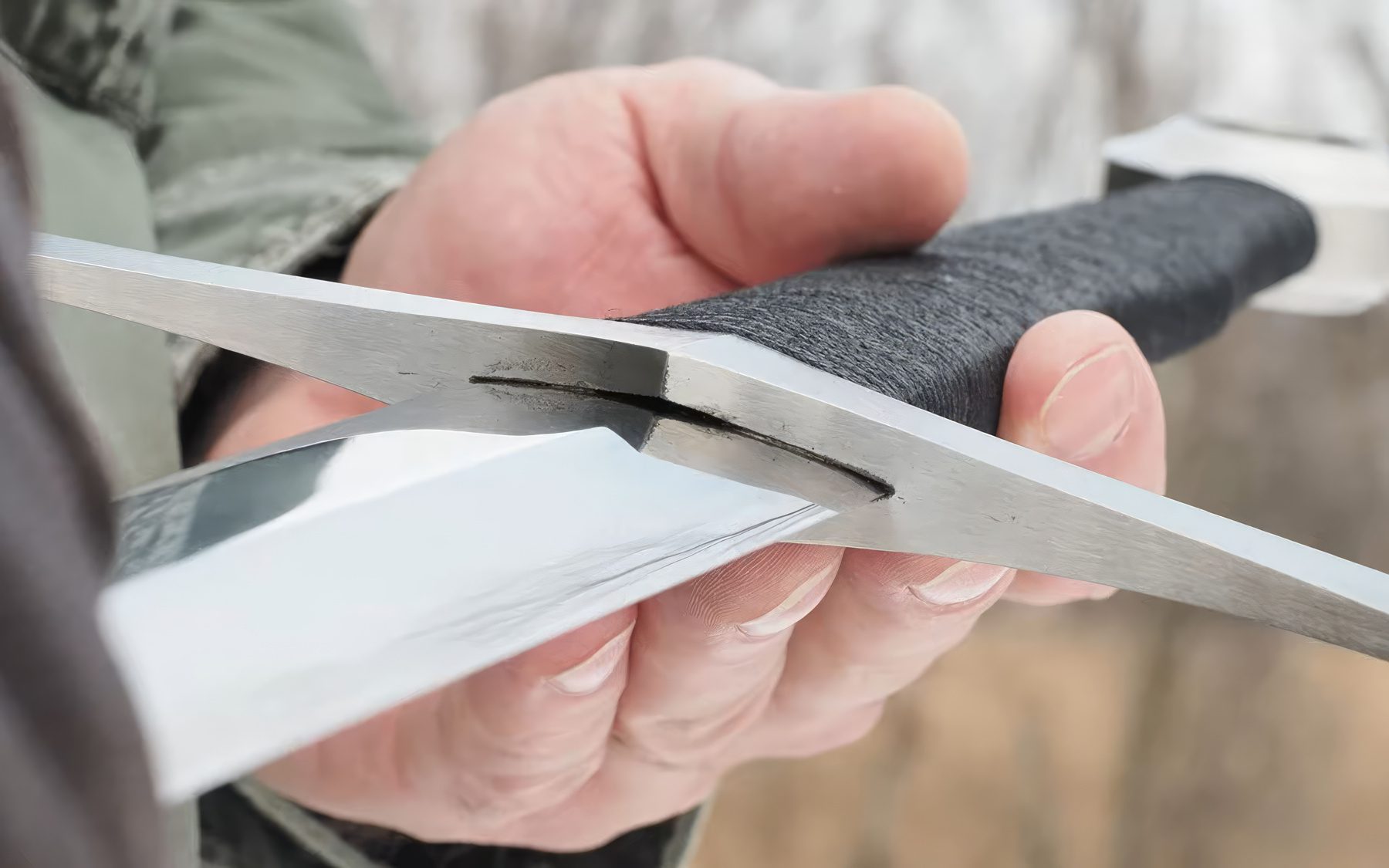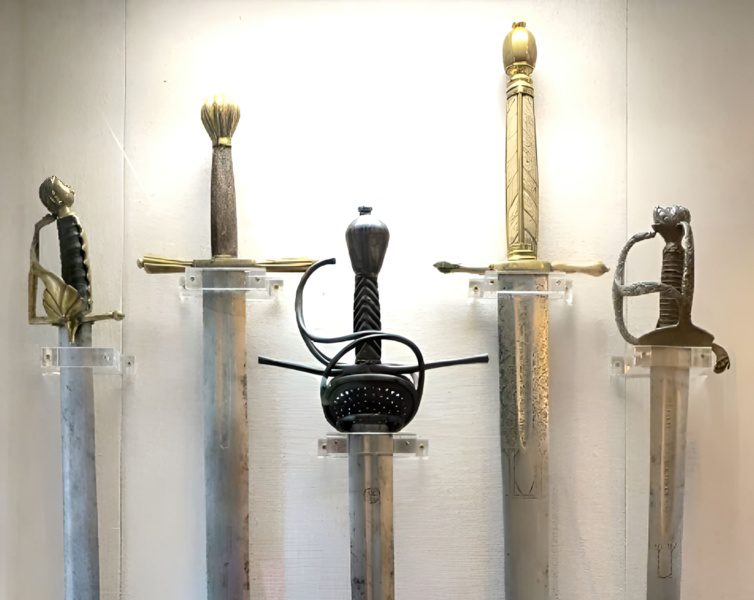What is a Double-Edged Sword and How Does it Look Like?
NO AI USED This Article has been written and edited by our team with no help of the AI

Swords are bladed and functional weapons that, throughout most of history, were single or double-edged. The single or double aspect represents the number of edges the blade can have, giving the sword different attributes, functions, pros, and cons.
In this article, we will explain what a double-edged sword is and its different characteristics. We shall explore the combat style the double-edged sword brings to the table and some of history’s most popular double-edged sword designs.
What is a Double-Edged Sword?

A double-edged sword is any type with a blade with two edges, meaning sharpened and ready to cut with both sides of the blade. The double-edged sword is the first sword design in history that evolved from the shorter and smaller dagger or knife. It spans many cultures as far away as the jian in Ancient China to the arming sword in Medieval Europe.
The prototype bronze swords in history were double-edged and generally much shorter due to technological limitations. With time, however, double-edged swords evolved gradually from larger knife-function tools to primarily one-handed swords combined with a shield and then to large and versatile two-handed weapons of war.
Double-edged swords were the primary sword design throughout much of history. Eventually, they were replaced with single-edged swords, which were easier to craft, maintain and use, especially with the decrease of armored units and the increase of cavalry and long-ranged rifles.
Double-Edged Swords Characteristics
Double-edged swords are balanced, versatile weapons known for their blade symmetry, dual sharpness, and adaptable combat usefulness. While most of this is thanks to the two edges of the blade, the other parts of the sword are equally as important.
Blade Design

The blade of the double-edged sword has two sharp edges, one on either side of the blade. These blades are equally sharpened and generally follow the same blade symmetry but can have a different profile, such as a lenticular or diamond shape. A common design trait of double-edged swords is the presence of a fuller in the center.
This fuller helps to lessen the weight of the blade while giving the spine more flexibility and the edge more room to bevel to a sharper point. Double-edged blades are straight and usually taper to a very sharp tip that works well for thrusting attacks thanks to the sharper sides throughout its length.
Many different blade designs from history had two edges. Some designs, like the Viking sword, had broader blades and leaf shapes like the xiphos that excel at chopping. Some had thin blades with double edges for fast attacks like the side sword. Most double-edged blades, however, were made to be equally powerful for chopping and thrusting.
Length

Double-edged swords come in various sizes, from smaller gladius shortswords to a massive zweihander or spadone. While the length isn’t a factor in determining what makes it double-edged, it greatly changes the impact of the sword’s function and tactics.
For example, a smaller double-edged sword can be fantastic for thrusting attacks through gaps in armor, used with a shield, while a larger double-edged sword can be a great chopping tool.
Weight

The weight of the double-edged sword is determined based on its length and intended function?whether used for chopping or quick and light duels, such as a rapier or smallsword.
Double-edged swords are usually not any heavier than single-edged swords, despite the number of edges. In fact, double-edged swords can be lighter in some situations because of the fuller design made to bevel both of the sharp edges. Beveling is the process of removing a large chunk of steel from the blade itself.
Guard

The handguard of double-edged swords can vary in design and size depending on the length and size of the sword. The most popular handguard design for double-edged blades is the crossguard cruciform shape. This guard can leave the hands open but works very well with the straight handle and blade, granting excellent protection.
The two sharp edges bring much versatility in both slashing and thrusting attacks but, in return, require the flexibility of the hands this type of crossguard brings. When folks started wearing less armor in battle, the protection of one’s hands increased, leading to the manufacturing of double-edged swords with a basket type of guard, such as the broadsword and other basket-hilted swords.
Handle

Generally, double-edged swords have straight handles to accompany the blade’s straight design. The straight handle also allows for versatile attacks that will go perfectly with double-edged blades when cutting from left, right, up, down, or thrust in a straight single line.
Double-edged swords usually have larger pommels at the end of the handle to better balance the weight of the sword. The design can have a broadening in the center. While looking simple, it is constructed to allow for a very secure grip so that the versatility of the double edges can be fully utilized.
Combat Style of Double-Edged Swords

Double-edged swords are excellent weapons to use in many types of combat thanks to their practicality, simplicity, and high level of flexibility. They are weapons that, unlike the popular opinion of being only capable of deadly, powerful thrusts, are equally as effective in their chopping and slashing attacks.
They can offer a wide range of movements that makes them effective in both offensive and defensive strategies while using either edge interchangeably. Depending on the size of a double-edged sword, it can be used in very tight formations such as a Roman testudo. It can also be used inside smaller confined spaces or large battle formations as a primary tool for bashing, slashing, and thrusting.
The two edges also provide better durability if one edge goes blunt or becomes damaged. The weight distribution and balance allow for very fast and unpredictable hits, which makes double-edged swords some of the most used in modern HEMA (historical European martial arts) training and study.





